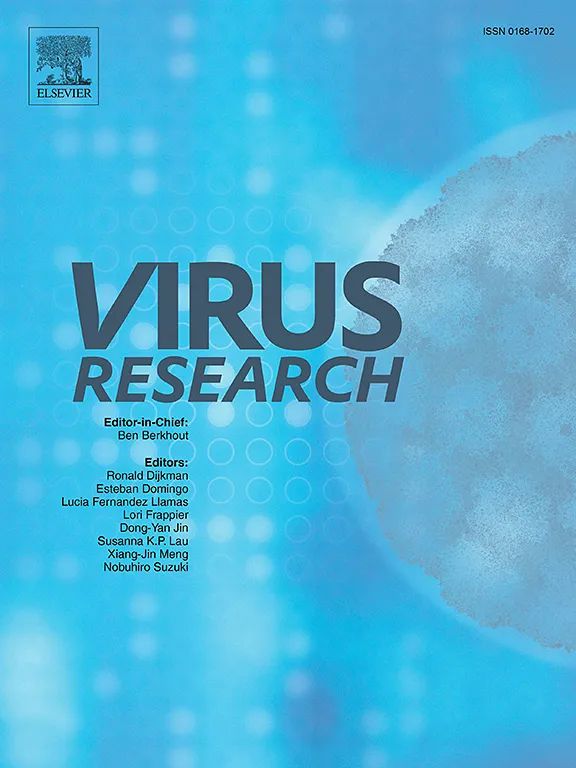COVID-19 mRNA疫苗对添加淋巴泵整骨疗法的免疫应答:一项随机对照试验
IF 2.7
4区 医学
Q3 VIROLOGY
引用次数: 0
摘要
骨科手法治疗(OMT)在临床前研究中已经证明了免疫增强,但在人体中缺乏直接证据。我们在2021年首次接种辉瑞- biontech (BNT162b2) COVID-19疫苗的受试者中进行了一项添加OMT的随机对照试验。受试者在每次接种疫苗时随机接受或不接受OMT。我们检测了抗刺突蛋白、抗核衣壳和中和抗体。主要终点为时间分辨和累积抗sars - cov -2刺突蛋白抗体滴度。次要终点是突破感染症状的频率、严重程度和持续时间。104名受试者被随机分配到对照组或OMT组,其中91名受试者完成了一次疫苗接种系列。初始抗体滴度将受试者分为51名COVID-19-naïve和40名covid -19预暴露者。根据数据同质性选取COVID19-naïve受试者进行分析。在该队列中,与对照组相比,OMT组在3周时抗sars - cov -2刺突蛋白抗体滴度显著增加(p=0.038)。在该队列中,与对照组相比,OMT组在5周(p=0.046)和13周(p=0.009)时的累积滴度显著增加。对所有受试者的意向治疗(ITT)分析显示,在3周时,OMT组和对照组的滴度有显著差异(p本文章由计算机程序翻译,如有差异,请以英文原文为准。
COVID-19 mRNA vaccine immune response to the addition of osteopathic manipulative treatment with lymphatic pumps: a randomized controlled trial
Osteopathic manipulative treatment (OMT) has demonstrated immune augmentation in preclinical studies, but direct evidence in humans is lacking. We conducted a randomized controlled trial on the addition of OMT in subjects receiving their first Pfizer-BioNTech (BNT162b2) COVID-19 vaccination in 2021. Subjects were randomized to either receive OMT at each vaccination or not. We measured anti-spike protein, anti-nucleocapsid, and neutralizing antibodies. Primary endpoints were time-resolved and cumulative anti-SARS-CoV-2 spike protein antibody titers. Secondary endpoints were breakthrough infection symptom frequency, severity, and duration. 104 subjects were randomly assigned to control or OMT group, with 91 subjects completing the primary vaccination series. Initial antibody titers separated subjects into 51 COVID-19-naïve and 40 COVID-19-pre-exposed. COVID19-naïve subjects were selected for analysis based on data homogeneity. In this cohort, the OMT group showed significantly increased anti-SARS-CoV-2 spike protein antibody titers at 3 weeks vs controls (p = 0.038). Cumulative titers in this cohort, were significantly increased in the OMT group at 5 weeks (p = 0.046) and at 13 weeks (p = 0.009) compared to controls. An intention-to-treat (ITT) analysis of all subjects revealed significant differences in titers between the OMT group and controls at 3 weeks (p < 0.001) and at 13 weeks for AUC titers (p = 0.035) as compared to controls. The COVID-19- pre-exposed group showed no significant differences. Both groups had 10 breakthrough infections, but the OMT group experienced fewer and less severe symptoms, with symptom duration reduced from 8 days in controls to 4.5 days in the OMT group (p = 0.013). Medication duration was shorter in the OMT group, 1.5 days vs 5 days (p = 0.014). OMT-treated subjects developed quicker and stronger vaccine-induced antibody titers and had significantly shorter and less severe breakthrough symptoms, suggesting OMT may enhance immune responses to COVID19 vaccination.
求助全文
通过发布文献求助,成功后即可免费获取论文全文。
去求助
来源期刊

Virus research
医学-病毒学
CiteScore
9.50
自引率
2.00%
发文量
239
审稿时长
43 days
期刊介绍:
Virus Research provides a means of fast publication for original papers on fundamental research in virology. Contributions on new developments concerning virus structure, replication, pathogenesis and evolution are encouraged. These include reports describing virus morphology, the function and antigenic analysis of virus structural components, virus genome structure and expression, analysis on virus replication processes, virus evolution in connection with antiviral interventions, effects of viruses on their host cells, particularly on the immune system, and the pathogenesis of virus infections, including oncogene activation and transduction.
 求助内容:
求助内容: 应助结果提醒方式:
应助结果提醒方式:


